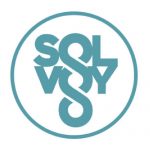Speaking the Customers’ Language
Monitor ERP System AB, that is headquartered in northern Sweden, has gone global using the Trojan Horse principle. This case story is an excerpt from my upcoming book Going Global on a Shoestring.
Manufacturing companies all share the same fundamental challenge: how to manufacture the required quality delivered on time with the lowest possible cost. The mathematical definition of the problem is “optimisation under constraints”, and the challenge comes from the complexity of the known variables (your internal resources and processes) and the continually changing constraints. Some customers are more important than others and need priority, some raw materials have varying delivery times and fluctuating prices, and some processes need to be performed by sub-contractors that face the same optimisation challenges.
The support for production simulation, planning, scheduling, costing and reporting was among the first software applications written in the mid-1960s. By the end of the 1980s about one-third of all software sold was for MRP purposes. Then came the PC and the technology became available to SMB companies also.
The customer value proposition

Monitor ERP System AB is a company and a solution that exclusively focus on supporting business processes for SMB discrete manufacturing companies. They were among the first to take advantage of the appearance of the microcomputer and have used the popularity of the PC to make advanced MRP functionality available to the SMB market. Over the years Monitor has become a fully-fledged ERP solution, however, maintaining its sharp manufacturing industry focus.

“We speak our customers’ language, and we have the functionality that they need,” says Johan Holmsten, sales and marketing manager. “We normally don’t have to do any customisation at all, which makes implementation times and expenses much lower than our competitors. The combination of a high degree of fit-for-purpose and the attractive cost of ownership makes it easy for our customers to make the vendor selection in our favour.”
Johan Holmsten that has been with Monitor for more than twenty years stresses that customers have learned the price of customisation and are increasingly looking for software they can use out of the box. With a 35 per cent market share in Sweden, Monitor is always on the shortlist when manufacturing companies in the SMB segment are on the outlook for a new system to support business processes.
Across their 4.000 customers, the average installation has 15 users, and the initial project price including implementation is EUR 50.000 with a twenty per cent annual charge for support and upgrades.
“We have installations with over 1.000 users and some with just a few users,” Johan Holmsten continues, “but we do not inspire to be an alternative to SAP to big enterprises or an alternative to Quickbooks for small businesses. Our strategic focus on the mid-market remains intact.”
Currently, the average sales cycle is six months from the time of BANT (Budget, Authority, Need and Time), but the trend is falling.
“We have recently given our technology a complete overhaul,” says Johan Holmsten. “Offering more functionality in a cloud-format will, combined with our leading market position, reduce sales cycles even further. In 2018 we booked 1,5 new customers deals per day and that number will increase to more than two per day in 2020.”
Internationalisation
Monitor has always maintained a direct go-to-market approach and has replicated this model in its international operations.
“Our customers have spearheaded our international activities,” explains Johan Holmsten. “Swedish SMB manufacturing companies started setting up operations abroad in the 1980s and asked us to provide Monitor in local languages and with support for the country-specific requirements. The first main hub was Poland, and after building a solid base of customers there, we opened a subsidiary in 1992.”

In 2007 the customer base in the Baltics called for local support and Monitor engaged with local companies to represent them in the region. Later came China and Malaysia. When Microsoft announced the discontinuation of Dynamics C5 in Denmark, Danish customers started making inquirers, and in 2016 a strategic alliance was formed with a partner that now operates under the Monitor brand name.
“Apart from Brazil, where we had to pull out, the approach of following our customers has worked wonders for us,” Johan Holmsten reveals. “Getting an installed base in a new country without any sales effort makes building the initial bridgehead so much easier.”
The challenge for Monitor is finding people with sufficient domain skills and an entrepreneurial mindset.
“That our company is headquartered 300 kilometres north of Stockholm is reflected in our culture,” says Johan Holmsten with a smile. “We have been in this business since its very beginning and may not have grown as fast as some of our colleagues, but we are still around, still in control, making good money and believe in the long haul. Finding the right people is the key to the success of our global expansion. It is not a matter of urgency, but rather a matter of taking the right steps one at a time.”
Monitor ERP expects high growth in South East Asia where they have subsidiaries in China and Malaysia.
“We have a solid customer base and a great team in place in South East Asia,” concludes Johan Holmsten. “This is the fastest growing part of the world, and the competition is primarily Excel. We are well positioned to get our fair share of this market. However, we are also looking at doing more in Europe. Where and how is still under consideration.”
This case story is an excerpt From my upcoming book Going Global on a Shoestring.








